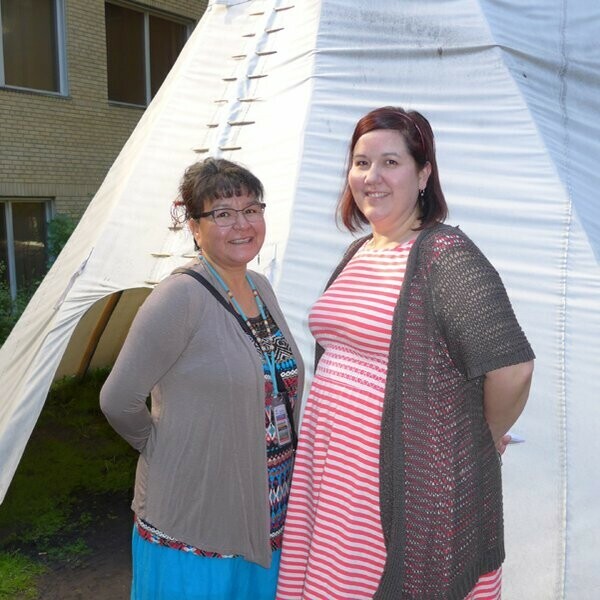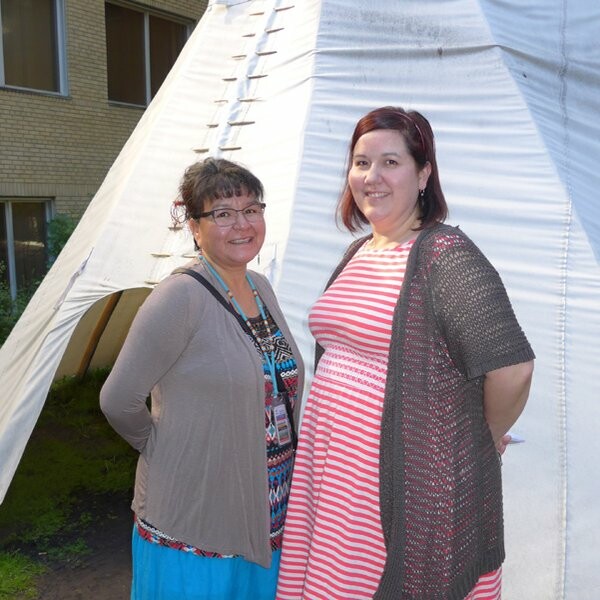Our Hospital, Our StoriesBridging the Gap: Indigenous Health at the Royal Alex
Posted on: Sep 13, 2016The Royal Alexandra Hospital is proud to serve a broad demographic of patients, from the inner city communities of Edmonton to the vast landscape of Northern Canada. One demographic that the Royal Alex is providing specialized patient care for is the Abor

The Indigenous Health Program (IHP) at the Royal Alex aims to provide an effective, holistic, patient-centered approach for improving care and delivery of health services to First Nations, Metis, and Inuit communities. It also takes on the crucial role of facilitating accessible cultural and spiritual support for those groups.
Natasha Gougeon is a Registered Nurse with the IHP. She explains how she and her colleagues help Aboriginal patients navigate the healthcare system.
“We want to respect both traditional medicine and western medicine, because they both have their place,” says Natasha. “Sometimes when patients are consulted at their doctor’s office, there can be some friction between the two. We don’t want to take a ‘my way or the highway’ approach; instead, we want to act as a bridge to explore all of the options when that’s needed.”
Besides offering practical patient assistance, the program also plays an important role in ensuring the cultural and spiritual needs of Aboriginal patients are being acknowledged and respected.
“We provide cultural, spiritual, and emotional support to our patients,” explains Lorraine Awasis, an Aboriginal Cultural Helper. “That support can take on many forms, such as translating conversations when a patient’s English isn’t very good. We also provide ceremonies and activities that are part of everyday life in the aboriginal community.”
Often times, Aboriginal patients will want to consult with an elder from the community to get advice on spiritual or cultural matters. The IHP has elders available for such consults, and offers traditional smudge and pipe ceremonies on a regular basis.
“Many of our patients come from remote or northern communities and do smudge ceremonies every day as part of their beliefs. So for them to know that these ceremonies are available during a hospital stay can be very comforting,” says Lorraine.

Lorraine Awasis (left) and Natasha Gougeon in front of the RAH teepee, which is a popular site on the hospital campus during the spring and summer months.
The Indigenous Health Program also specializes in offering care and information to diabetes patients. The Aboriginal Diabetes Wellness Program provides a four day, culturally safe, holistic diabetes education program (meals and accommodation included), as well as one day follow-up appointments with the wellness team.
“Aboriginals are at three to five times higher risk of developing diabetes,” explains Natasha. “So there is a great demand to meet those specific healthcare needs.”
The IHP has evolved over the years to meet the changing needs of the patients it serves. Starting with the Aboriginal Diabetes Wellness Program in 1996, the IHP was integrated into a province-wide aboriginal health program from Alberta Health Services in 2009. The newest offering is the primary care component (2014), designed to meet the needs of the urban Aboriginal population in Edmonton.
Other elements of the IHP include a dedicated space at the Royal Alexandra Hospital for patients to gather for social and educational activities. Part of the IHP’s educational component includes cultural sensitivity training for Alberta Health Services staff to increase awareness of Aboriginal beliefs and customs, and to reduce barriers for communicating with and assisting patients.
Natasha is confident that the IHP team is making a real difference in the Aboriginal community.
“We know that there is a great demand for our specialized services,” she says. “We’ve come a long way and are proud to focus on what our community needs.”
“We want to ensure that Aboriginal Albertans are getting the care that they need and deserve.”
Elders: An elder is a person that has accumulated a great deal of wisdom and knowledge throughout his or her lifetime, especially in the tradition and customs of the group. Elders are considered the gatekeepers of First Nations wisdom, knowledge, and history. Elders traditionally hold crucial roles in supporting both formal and informal education in First Nations communities.
Smudge ceremony: The burning of various medicine plants (such as sage, sweetgrass, or cedar) to make a smudge or cleansing smoke is used by the majority of Native North American peoples. It is considered a ritual cleansing. As the smoke rises, prayers rise to the Spirit World where the Grandfathers and the Creator reside. Negative energy, feelings, and emotions are lifted away with the smoke. It is also used for healing of mind, body and spirit, as well as balancing energies.
Pipe ceremony: The pipe ceremony is a sacred ritual for connecting physical and spiritual worlds. "The pipe is a link between the earth and the sky," explains Gabriel Horn, AKA White Deer of Autumn, a well-known Native American author and advocate. "Nothing is more sacred. The pipe is our prayers in physical form. Smoke becomes our words; it goes out, touches everything, and becomes a part of all there is. The fire in the pipe is the same fire in the sun, which is the source of life."
Sources: Aboriginal Multimedia Society, First Nations Pedagogy Online
